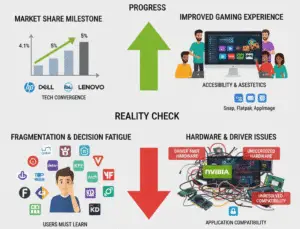
What is a Network? A Simple Explanation with Examples
In today’s digital world, the term “network” is used everywhere—from social networks to computer networks. But what exactly is a network, and how does it work?
Definition of a Network
A network is a system where multiple devices, people, or organizations are connected to share information, resources, or services. Networks allow communication and data exchange between different points, making collaboration and access to information easier.
Types of Networks with Examples
Networks can be categorized based on their size, purpose, and connection method. Here are some common types:
1. Computer Networks
These connect computers and devices to share data and resources.
-
Example: The Internet is the largest computer network, linking millions of devices worldwide.
-
Local Area Network (LAN): Connects devices in a small area, like an office or home Wi-Fi.
-
Wide Area Network (WAN): Covers large distances, like a company connecting offices in different cities.
2. Social Networks
Platforms where people interact and share information.
-
Example: Facebook, LinkedIn, and Twitter allow users to connect and communicate.
3. Transportation Networks
Systems that connect routes for travel and logistics.
-
Example: Road networks (highways), railway networks, and airline routes.
4. Business Networks
Connections between companies, suppliers, and customers for trade and collaboration.
-
Example: A retail store working with suppliers and delivery services to sell products.
Why Are Networks Important?
-
Efficient Communication – Enables fast sharing of information (e.g., emails, video calls).
-
Resource Sharing – Allows multiple users to access printers, files, or internet connections.
-
Cost Savings – Businesses reduce expenses by sharing data and services.
-
Global Connectivity – The internet connects people worldwide for education, business, and entertainment.
How Do Networks Work?
Networks use hardware (routers, switches, cables) and software (protocols like TCP/IP) to transmit data.
-
Step 1: A device (like your phone) sends a request (e.g., loading a website).
-
Step 2: The request travels through a router to the internet.
-
Step 3: The server processes the request and sends back the data.
-
Step 4: Your device receives and displays the information.
Real-Life Example:
When you send a WhatsApp message:
-
Your phone connects to Wi-Fi (a network).
-
The message travels through the internet to your friend’s phone.
-
Their phone receives it instantly—all thanks to networking!
Conclusion
A network is simply a connected system that helps people and devices communicate and share resources. From the internet to social media and transportation, networks play a vital role in our daily lives. Understanding how they work can help you use them more effectively, whether for personal use or business growth.




